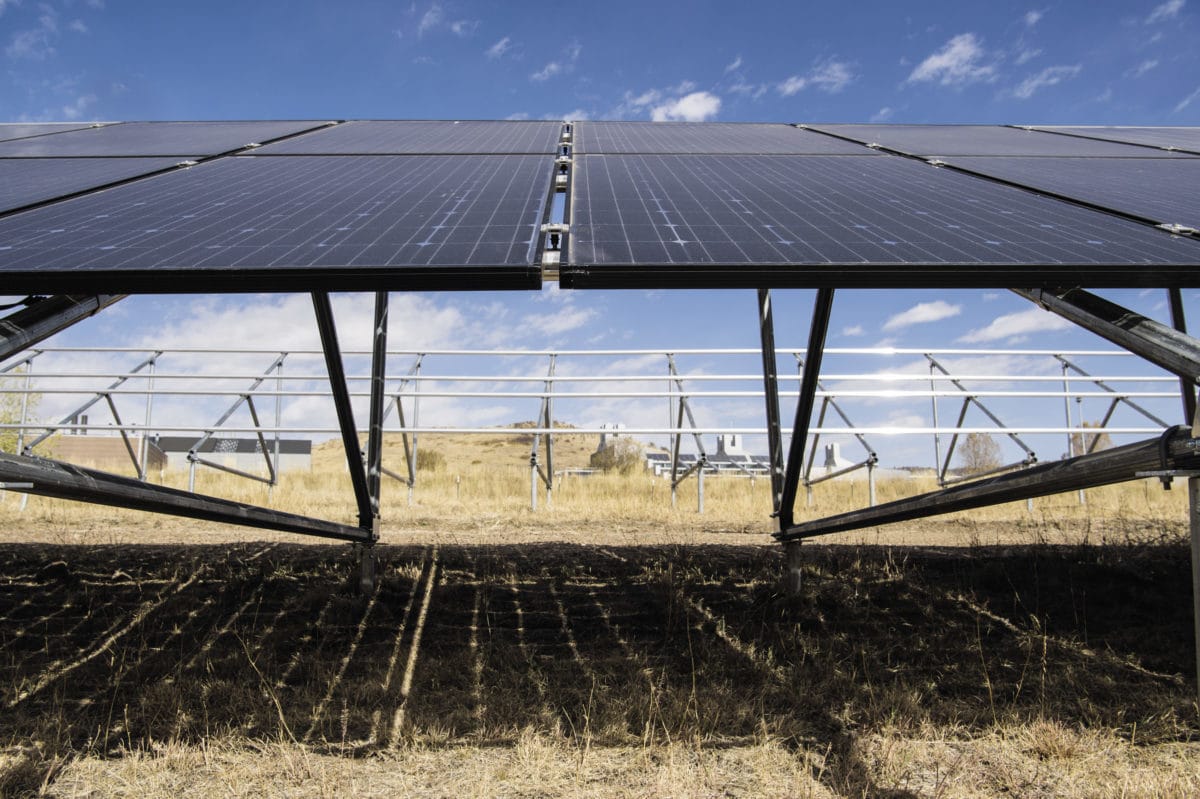From pv magazine global
Bifacial modules are already well on the way to mainstream production with analysts expecting demand for double-sided modules to reach 12 GW this year.
But it is still early days for the technology and the industry is eager to ensure system designs strike an optimal balance between energy yield and system cost. In May, The U.S. National Renewable Energy Laboratory (NREL) began a study of bifacial performance at its headquarters in Colorado and it is now beginning to make data from test installations publicly available.
Albedo
No more than a minor concern with conventional PV panels, the question of albedo – light reflected from the ground – is among the biggest factors which affect bifacial solar module performance. NREL plans to gather a full year of data about the albedo of natural ground cover before investigating the possibility of adding higher-albedo material beneath panels.
Other studies have confirmed significant yield increases can be achieved with albedo-enhancing materials, although a cost effective large-scale solution is yet to emerge.
“We look at ways of enhancing the ground albedo through different treatment options like natural vegetation, crushed rock and weed barriers,” said NREL researcher Chris Deline. “Some of that is already happening in industry but this will be the first multi-year study with open data.”
Module mismatch
Non-uniform irradiance hitting the rear of bifacial modules also needs to be taken into account. The NREL group, alongside industry partners, has investigated the question of electrical mismatch in bifacial systems.
Their findings are presented in the paper Bifacial PV System Mismatch Loss Estimation and Parameterization, published in Progress in Photovoltaics. The group observed annual mismatch losses of up to 2% in rooftop systems mounted close to the surface, falling to less than 0.5% for rooftop systems with higher ground clearance. The paper also describes how module design elements – such as fill factor and bifaciality ratio – as well as edge-of-row effects and rear-side shading all influence the mismatch percentage. The study presented a basis for estimating mismatch losses which its developers said could be used in hourly PV performance simulations.
Batteries
NREL is also evaluating how best to integrate energy storage with bifacial systems, as well as broader aspects of project design. “By boosting output, these modules can also reduce the total number of panels required,” said Deline, “which makes for more efficient use of inverters, racking, tracker systems, interconnects and other hardware.”
The addition of storage – in NREL’s case, two redox flow batteries – was also found to have a positive effect on system efficiency. “We’re running an energy arbitrage scenario with the batteries that discharges in the afternoon and evening with roughly four hours of continued power from solar generation,” Deline said. “Otherwise, bifacial gain is clipped at the peak but low elsewhere – so this provides more stable and consistent generation.”
NREL said it is aiming to work with industry to meet the requirements of bifacial technology. “By publishing on this, solar installers are going to see better terms on financing,” added Deline. “Utilities are going to bring more consistent, renewable and affordable energy into their generation mix.”
This content is protected by copyright and may not be reused. If you want to cooperate with us and would like to reuse some of our content, please contact: editors@pv-magazine.com.









Interesting, some of the efficiencies mentioned as in albedo increasing power harvest and needing (less) panels and hardware for solar PV generation. I would submit, the efficiency of bifacial when it comes down in price, then the benefits of more power harvest will become more useful at a reduced price. This will allow over design of a system and running D.C. to A.C. busses in the 1.5VDC to 1AC output arrays. Adding tracking for utility scale projects will allow longer solar PV harvest per day. As energy storage is decreasing in price, this will become the ‘new’ technology that will allow extended solar PV self consumption for longer periods of the day. I can see a day when the complete system will be solar PV with energy storage and within the residential market place, enhanced power inverters using SiC or GaN switching transistors can create the 15kW to 25kW single phase inverter to run a home.